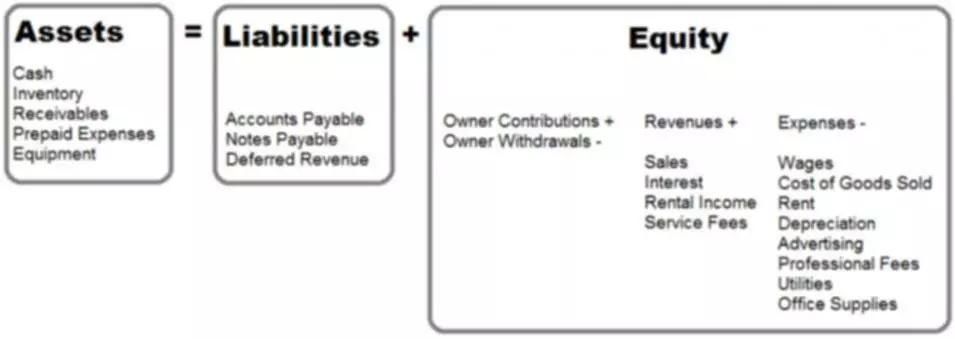Content

Once this same process is done for each year, we can move on to the fixed asset turnover. In practice, the ratio is most helpful when compared to that of industry peers and tracking how the ratio has trended over time.
Check out our asset turnover definition and learn how to calculate total asset turnover ratio, right here. Asset turnover is considered to be an Activity Ratio, which is a group of financial ratios that measure how efficiently a company uses assets. Total asset turnover ratios can be used to calculate Return On Equity figures as part of DuPont analysis. As a financial and activity ratio, and as part of DuPont analysis, asset turnover is a part of company fundamental analysis. While the asset turnover ratio considers average total assets in the denominator, the fixed asset turnover ratio looks at only fixed assets. The fixed asset turnover ratio is, in general, used by analysts to measure operating performance.
Payment terminal
Get instant access to video lessons taught by experienced investment bankers. Learn financial statement modeling, DCF, M&A, LBO, Comps and Excel shortcuts. For Year 1, we’ll divide Year 1 sales ($300m) by the average between the Year 0 and Year 1 PP&E balances ($85m and $90m), which comes out to a ratio of 3.4x.
Return on Equity (ROE): Definition and how to calculate it – Business Insider
Return on Equity (ROE): Definition and how to calculate it.
Posted: Mon, 19 Sep 2022 07:00:00 GMT [source]
The total asset turnover ratio is a general efficiency ratio that measures how efficiently a company uses all of its assets. This gives investors and creditors an idea of how a company is managed and uses its assets to produce products and sales. Asset turnover is a key metric used to describe your company’s financial health. Your asset turnover ratio measures how effectively your company is using the fixed assets and liquid assets that it has to generate revenue. Outside investors will use this ratio to compare your company’s performance to others in the same sector.
Calculation Of The Asset Turnover Ratio: A Business Case
The DuPont Analysis calculates the Return on Equity of a firm and uses profit margin, asset turnover ratio, and financial leverage to calculate RoE. We use the average total assets across the measured net sales period in order to align the timing between both metrics. So from the calculation, it is seen that the asset turnover ratio of Nestle is less than 1. Also, many other factors can affect a company’s asset turnover ratio during periods shorter than a year.
- Suppose you know the average asset turnover ratio for a company in your industry.
- For example, retail or service sector companies have relatively small asset bases combined with high sales volume.
- As a result, it’s hard to find out the most efficient assets and those that are not adding much to the bottom line.
- Conversely, if the ratio is lower it indicates that the company is not using its assets efficiently.
- Look for a higher current asset turnover ratio because it shows that a company is strong in its fundamentals.
That’s because when you take assets on a lease, the value of these assets is not added to the balance sheet. Don’t apply the asset turnover formula to your business if you are in the service sector. The chances are that you will get a significantly poor asset turnover ratio. But it is all right because not all businesses will find this metric helpful.
Sales Experience
Anytime that someone uses a financial ratio like the one that measures net asset turnover, he or she should realize the limitations of the ratio. Also, many other factors can affect a company’s asset turnover ratio during periods shorter than a year. Locate total sales—it could be listed as revenue—on the income statement.
- The GoCardless content team comprises a group of subject-matter experts in multiple fields from across GoCardless.
- When calculating and analyzing asset turnover ratio for your company, be sure you only compare results to those in similar industries.
- Some industries are simply more asset-intensive than others are, so their overall turnover ratios will be lower.
- If your asset turnover ratio is higher than others in the industry, this means you are using your assets to generate more sales than your competitors.
- Investors may be able to adjust for excess cash, but there’s no clear delimiter on the amount of cash needed for day-to-day operations and excessive amounts of cash.
They can pull up their competitors’ balance sheets and income statements, calculate their asset turnover ratios and compare them to their own. If they are still under, they need to make further changes to optimize inventory management or look to other means of improvement like changing operating hours. For example, maybe the other companies are open seven days a week, whereas this one closes on Sundays.
Return on equity is a measure of financial performance calculated asset turnover ratio by dividing net income by shareholders’ equity. The asset turnover ratio should be used to compare stocks that are similar and should be used in trend analysis to determine whether asset usage is improving or deteriorating. This ratio is used asset turnover ratio as a financial indicator which tells the efficiency of a company in the management of its assets. It is used to know the level of the assets’ rotation to identify the shortcomings and then enact improvements to maximize the use of the company’s resources. The rotation of the assets means how long the assets take to become cash.
What is a good IRR for 5 years?
For levered deals, commercial real estate investors today are generally targeting IRR values somewhere between about 7% and 20% for those same five to ten year hold periods, with lower risk-deals with a longer projected hold period also on the lower end of the spectrum, and higher-risk deals with a shorter projected …
